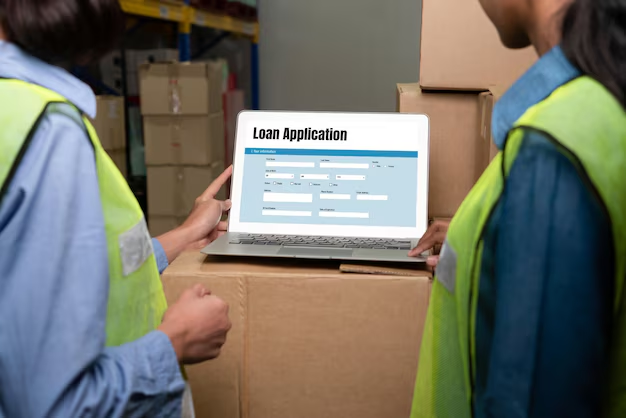Navigating Product Liability Insurance: A Practical Guide
When crafting or selling products, makers envision them enhancing lives and achieving success. However, the stakes are high if something goes wrong. That's where product liability insurance enters the picture, providing a necessary safety net for businesses. In this guide, we’ll dive deep into understanding and acquiring product liability insurance, covering the essentials every business owner should know.
📦 What is Product Liability Insurance?
Product liability insurance is a type of coverage designed to protect businesses from financial losses due to claims related to the manufactured or sold products. It covers legal defense costs and any compensation required by the court if the insured is found liable.
Why is it Important?
Even with rigorous testing and quality control, product flaws can surface unexpectedly. These issues might lead to injuries or damages for which a business could be held responsible. Product liability insurance mitigates such risks and ensures business continuity by covering the financial impact of these claims.
Key Coverage Areas:
- Design Defects: Flaws in the product design that make it inherently unsafe.
- Manufacturing Defects: Errors in the production process that result in a faulty product.
- Marketing Defects: Insufficient instructions or safety warnings that lead to consumer misuse.
🎯 Who Needs Product Liability Insurance?
Virtually any business involved in the production, distribution, or sale of tangible products should consider product liability insurance. This includes:
- Manufacturers: Those who produce goods, from startups to large corporations.
- Retailers and Distributors: Sellers and middlemen can also be implicated in liability claims.
- Importers: Bringing products from overseas and introducing them to local markets increases exposure to liability claims.
🔍 Understanding the Insurance Policy
When evaluating product liability insurance, it’s crucial to understand the specifics of the policy. Here’s what to look for:
Coverage Limits
Ensure the policy offers adequate coverage for potential risks. Limits vary widely and should correlate with the business’s size, scope, and the potential risk exposure of its products.
Exclusions
Every policy has exclusions. Common exclusions might include:
- Intentional Acts: Most policies will not cover damages resulting from intentional misconduct.
- Product Recalls: Typically, general coverage does not include recall costs unless specified in added endorsements.
Deductibles
The deductible is what the insured must pay out of pocket before insurance coverage kicks in. Balancing higher deductibles against lower premium costs can be beneficial but should be approached with care.
Defense Costs
This is a significant aspect, ensuring legal defense costs are included in the policy without the need to dip into coverage limits.
🛠️ Acquiring Product Liability Insurance
Assess Your Needs
Start by evaluating the nature and scale of your business. Consider:
- The type of products sold and their inherent risks.
- Historical claims in your industry.
- Distribution range and customer demographics.
Choose the Right Insurer
Selecting a reputable insurer is vital. Seek those with:
- Experience and credibility in offering product liability insurance.
- A strong track record of customer service and claims settlements.
- Industry-specific expertise.
Customize Your Policy
Work with insurance professionals to tailor a policy to your needs. This might involve:
- Adding Endorsements: Such as product recall coverage if that’s a significant risk.
- Adjusting Coverage Limits: Based on projected sales and distribution territories.
Compare Quotes
Never settle on the first quote. By comparing multiple policies, you ensure competitive pricing and coverage that aligns with your business needs.
🛡️ Key Considerations
Ongoing Risk Management
Adopting robust risk management practices can help in minimizing liability claims. This includes:
- Quality Control: Rigorous testing and quality assurance processes.
- Consumer Education: Providing comprehensive product information and usage guidelines.
- Feedback Mechanisms: Encourage customer feedback to identify and rectify potential issues swiftly.
Legal Compliance
Ensure that your products comply with all relevant local and international safety standards and regulations. Staying informed can preempt potential legal challenges.
Claims Process
Understand the claims process thoroughly. Familiarize yourself with the procedures for making a claim, and ensure employees are trained accordingly.
✅ Summary: Quick Tips for Product Liability Insurance
Here’s a visual list of practical tips to consider:
- 📈 Assess Needs: Determine your risk level based on product type and market.
- 🔍 Choose Wisely: Select insurers with expertise and experience.
- 🔧 Customize Policy: Tailor coverage to your specific business risks.
- 📊 Compare Quotes: Ensure competitive pricing and comprehensive coverage.
- 🏷️ Incorporate Endorsements: Address unique risks like recalls.
- 🎓 Educate Consumers: Clear instructions and warnings reduce misuse and claims.
- 📑 Comply with Regulations: Keep products within legal safety standards.
- 📥 Manage Feedback: Use customer insights to address potential product issues.
Understanding product liability insurance is pivotal for safeguarding your business against unforeseen circumstances. By proactively acquiring the right insurance, customizing the policy, and incorporating effective risk management practices, businesses can focus on innovation and growth with peace of mind.

Related Topics
- A Comprehensive Guide On Cancellation/Interruption Travel Insurance
- A Comprehensive Guide On Universal Life Insurance
- A Comprehensive Guide To Drone Insurance
- A Comprehensive Guide To Gap Insurance: Decoding Its Benefits, Eligibility, And How To Apply
- A Comprehensive Guide To Maternity Health Insurance
- A Comprehensive Guide To Medical Travel Insurance: Everything You Need To Know
- A Comprehensive Guide To Money-Back Policies
- An Extensive Guide On Crop Insurance
- An Insight Into Employment Practices Liability Insurance (EPLI)
- Demystifying Endowment Policies: Your Ultimate Guide